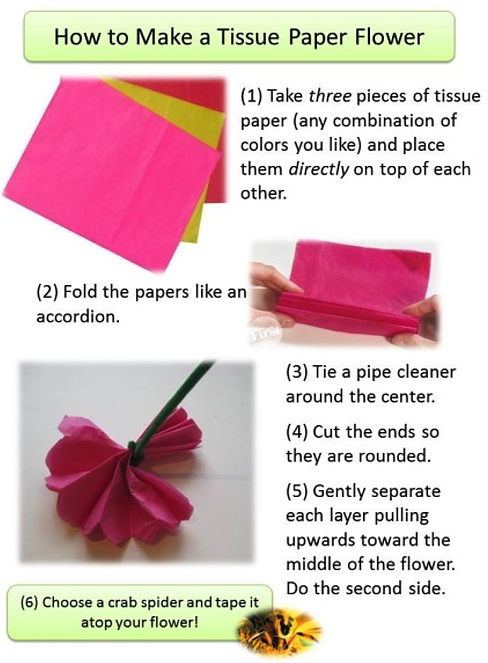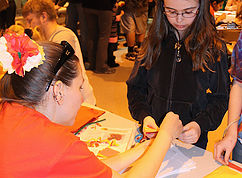Tissue Paper Flower
GOAL: To introduce some cool facts about spiders. Specifically, some spiders can change color! Building from this cool fact, we can learn something about camouflage.
BACKGROUND: Many species of crab spider (Family Thomisidae) sit motionless atop a flower waiting in ambush for an unsuspecting pollinator to drop in. The crab spider Misumena vatiacommonly hunts atop goldenrod and can be yellow or white, depending upon the color of the flower upon which they are hunting. These spiders can actively change their color by secreting a yellow liquid pigment into their outer cell layer. This pigment can then be moved closer to, or further from, the outside of the body enabling the spider to change its color. If the pigment is transported to the spider’s lower cell layers, the white guanine that fills the inner glands becomes visible and the spider turns white. To turn back yellow, the pigments are transported closer to the surface again.

PROCEDURE:
-
Participants can follow the instructions on how to make their own tissue paper flower.
-
Once their flower is finished, they can choose a crab spider to place atop their flower.
-
Does their spider blend in or does it contrast with the flower? How might this influence the spider’s foraging success?
-
You may reward participants who successfully camouflaged their spider (e.g., providing jelly beans to represent foraging success).

MATERIALS:
-
Pre-cut squares of yellow, white, and red tissue paper.
-
Green pipe cleaners.
-
Age-appropriate scissors
-
Pre-cut crab spiders printed on white or yellow paper.
-
Double-stick tape and/or glue sticks.
-
Two posters: Camouflage and Crab Spiders




